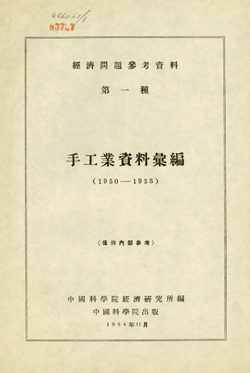
Selection of the Texts
Between the fall of the Qing dynasty in 1911 and the Communist victory of 1949 (the Republican Era), the first half of the twentieth century witnessed a staggering transformation of Chinese society. While the nominally ruling Nationalist Party was never able to establish a fully stable government, though its approach has often been criticized as dictatorial and insensitive to the needs of the peasantry (who were successfully mobilized by the Communists), nevertheless, independent schools and universities were established, an independent judiciary evolved, and indigenous as well as joint-venture capitalist enterprises flourished. Moreover, there were distinctly new freedoms of movement and assembly.

After the founding of the Communist Party in 1921 and the beginning of civil war between the Communists and the Nationalists in the late 1920s, however, areas under Nationalist and Communist control governed in radically different styles. The range of published books from Nationalist and Communist areas reflects this difference. Nationalist Party bureaucrats, in the service of reforms in education, health care, transportation, and business, collected massive amounts of statistical and ethnographic materials. Publications from Communist areas are far more ideological, and less interested in describing local society than in prescribing revolutionary change. These prescriptive materials, nonetheless, give a rich picture of the practical evolution of Communist government during the long transition from Empire to the People's Republic.
The Republican era is of deep interest to scholars today both as a key era in China’s modernization, and for its similarities to the current era of market reforms in China. Making Republican-era materials widely available would thus serve a wide variety of scholarly interests.
Since the digitization of selected monographs was a pilot project by the University of Pittsburgh's Digital Research Library, only 36 titles (37 volumes with approximately 10,500 pages) published before 1955 were selected from the East Asian Library (EAL). The goal of this pilot project is to enhance the access to these rare and unique primary documents and reference books for both researchers and librarians.
The titles cover two categories: primary sources and reference tools. The subject areas range from politics, economy and law to history, education and literature. Primary sources are divided by subject: history (4), law (2), literature (1), political science (4) and social sciences (8). Reference tools are arranged by type: bibliography (1), chronology (1), directory (1), handbooks (2), statistics (7) and yearbooks (5).
The University of Pittsburgh provides access to the digital images for personal, noncommercial, educational and research purposes only.
© 2005–
University Library System, University of Pittsburgh